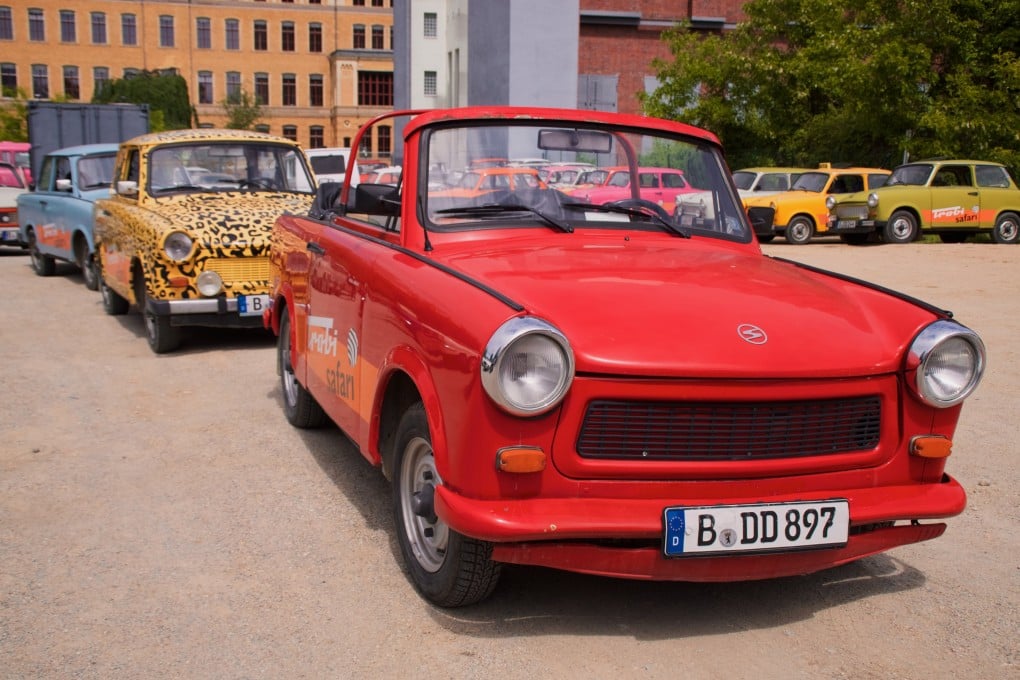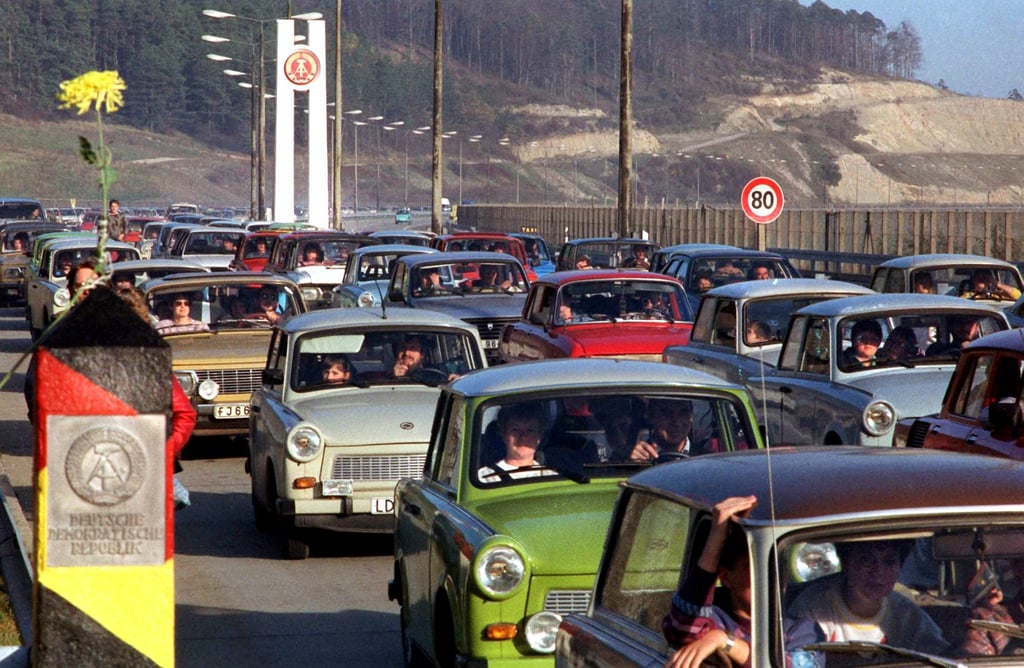From communist relic to retro chic, the Trabant, ‘freedom car’ East Germans waited years to buy, is a bit of beast to drive, as we discover on a tour of Dresden
- Built in communist East Germany as a rival to the Volkswagen Beetle, the Trabant had terrible brakes, a puny engine and no power steering or fuel gauge
- However, it was a symbol of freedom in 1989 when the border with West Germany opened, and today you can take one for a spin around Dresden

I’m at the depot of Trabi-Safari in a leafy Dresden suburb, preparing to set off around town behind the wheel of a small and shuddering 1950s vehicle once widely considered a symbol of freedom. But suddenly a voice crackles from the dashboard speaker.
“I talk, you listen!” it barks. “Just like in the old communism times.”
In 1954, the Politburo of East Germany, or the German Democratic Republic (GDR), effectively under Russian control since the end of World War II, gave the go-ahead for the development of a small car to rival capitalist West Germany’s robust and affordable Volkswagen Beetle.
The result, produced in nationalised Porsche and Audi factories, could hardly have been further from the sleek and efficient machines formerly manufactured there.

With a body of textile waste and chemical resin, a highly polluting 600cc two-stroke, two-cylinder engine and disturbingly limited brake power, the tinny little two-door Trabant, affectionately known as the Trabi, was designed around the principle that what it didn’t have couldn’t break. And what it didn’t have included a water cooling system or a petrol gauge, let alone luxuries such as power steering, self-cancelling indicators or central locking.
But I’m on the road in a piece of history. When, in May 1989, communist Hungary unexpectedly opened its border with capitalist Austria, and East Germans holidaying there seized the opportunity to escape, the exodus of Trabis seemed to television audiences worldwide to symbolise both the desire for freedom and its attainment.
